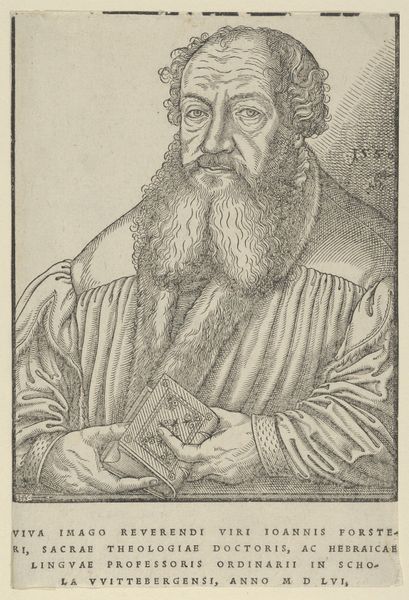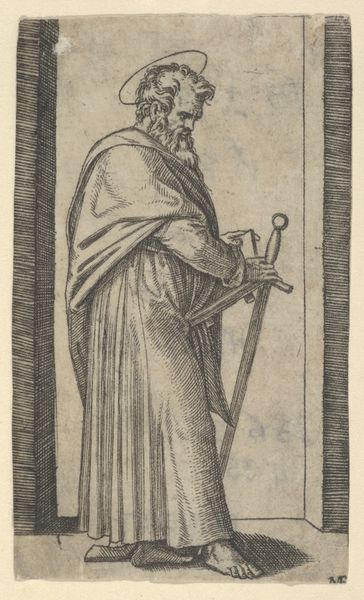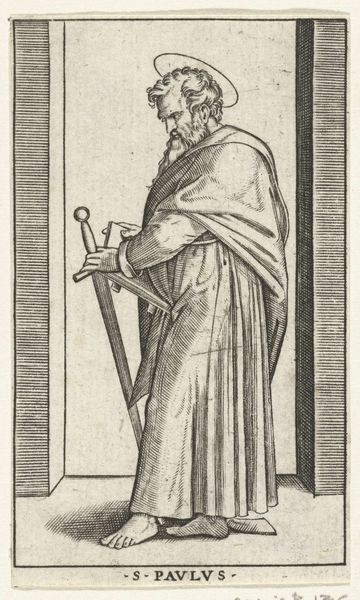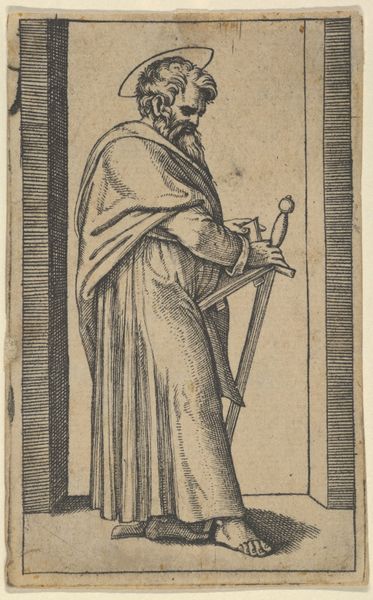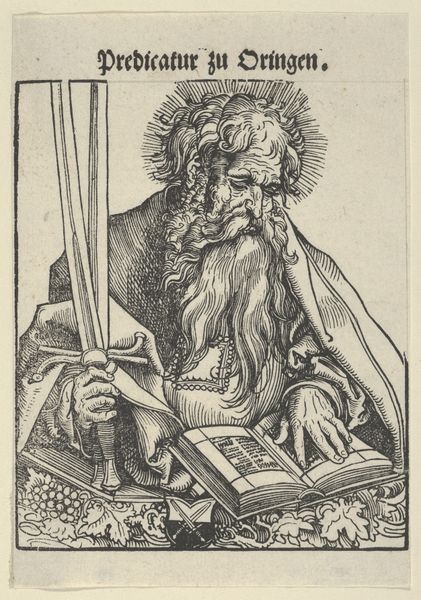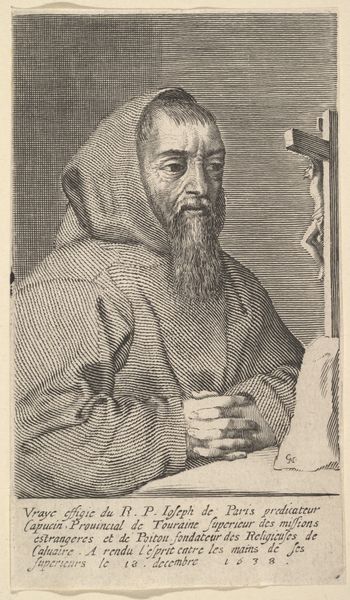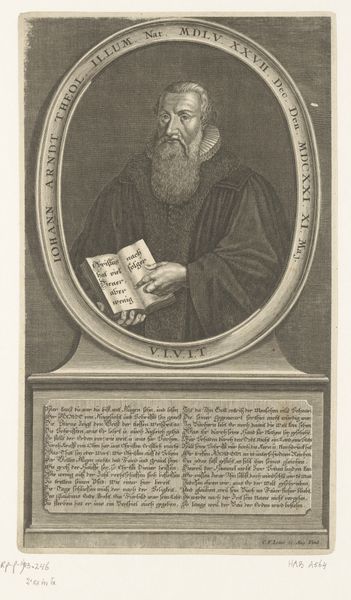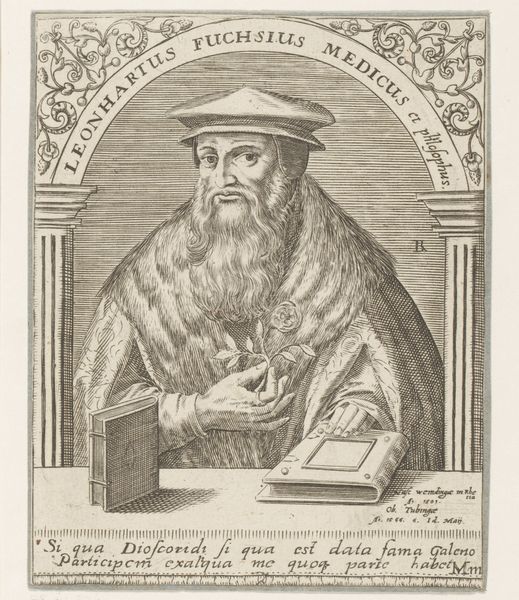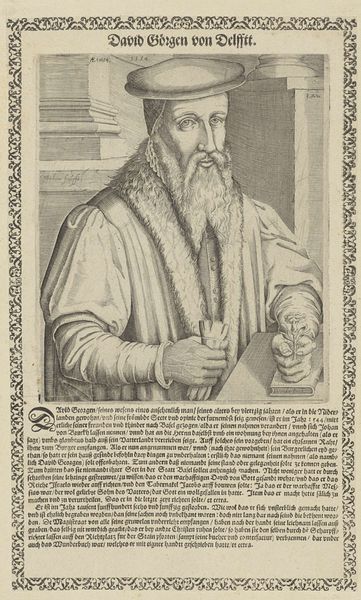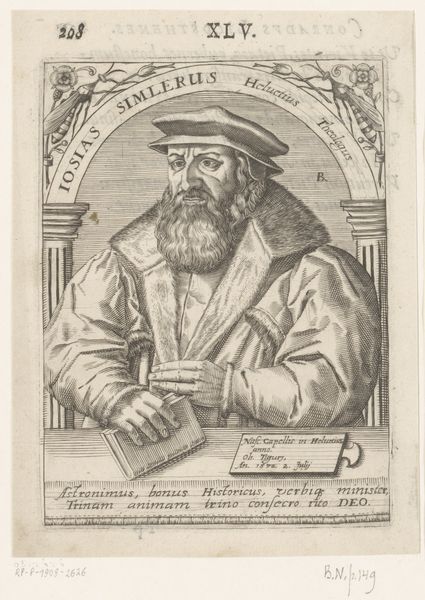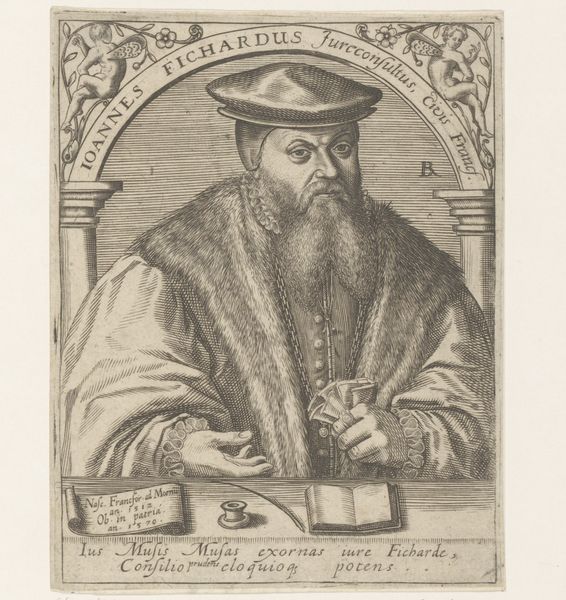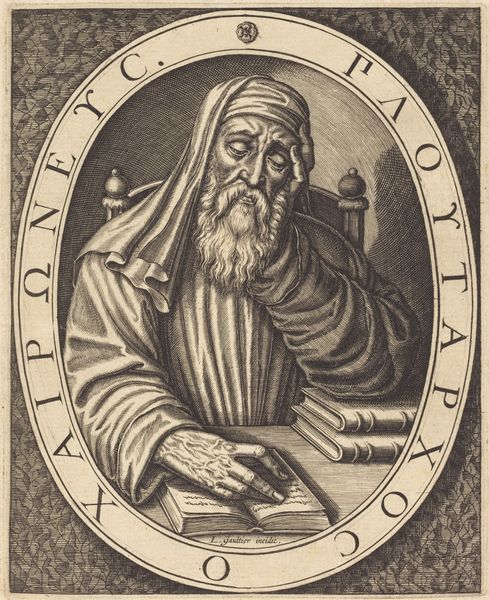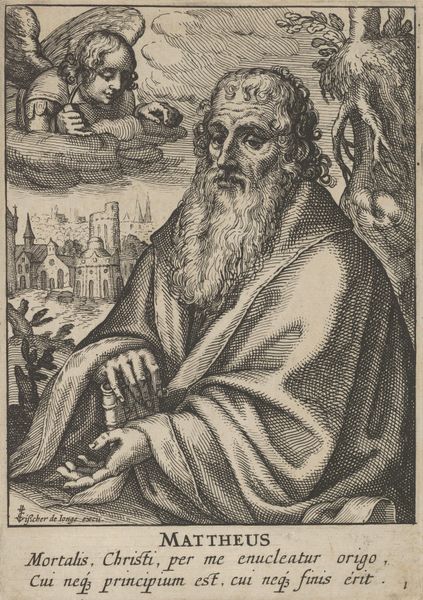
print, engraving
#
portrait
#
baroque
# print
#
history-painting
#
engraving
Dimensions: height 127 mm, width 63 mm
Copyright: Rijks Museum: Open Domain
Curator: This is a baroque print from somewhere between 1651 and 1701, titled "Portret van Jan Arentsz," housed right here at the Rijksmuseum. Editor: It’s predominantly an exercise in texture, isn’t it? The fur trim, the ruff collar, the lined face, all rendered with incredible precision using engraving. You could almost reach out and feel the coarseness. Curator: Indeed. Arentsz was a fairly prominent figure at the time. This engraving helped solidify his legacy among the literate public of the Dutch Republic. Prints like this served to circulate images and ideas. Editor: And look at the way he's posed –caught in the act of writing, poised with a quill above an open book. The light catching the pages makes the book almost ethereal. Curator: Exactly! This emphasizes Arentsz as an intellectual figure. It links him to a world of learning and religious thought, further evidenced by the backdrop of stacked books, each symbolizing erudition and scholarly achievement. Editor: It strikes me that while the lines are delicate, the overall effect is quite powerful, not traditionally baroque in its dynamic grandeur, but in its quiet intensity. The text adds another dimension; the subject in the work feels as though he could at any moment cast a thoughtful gaze toward any viewer. Curator: And that textual inscription at the bottom, referring to Arentsz as an eagle... these little details added layers of meaning, inviting viewers to engage with Arentsz's public persona. The portrait plays into constructed imagery but reinforces status. Editor: I was also captured by the almost monochromatic uniformity. Each minute hatch lends itself to not only describe tone but create space as well. Curator: It underscores the limitations, and triumphs, of the engraving process in that era. Editor: I agree, understanding the meticulousness behind the art makes it all the more significant and impactful. Curator: Absolutely. This work is so much more than a depiction; it serves as an historical and artistic mirror reflecting Arentsz's perceived importance and the dynamics of Dutch society in the 17th century.
Comments
No comments
Be the first to comment and join the conversation on the ultimate creative platform.
